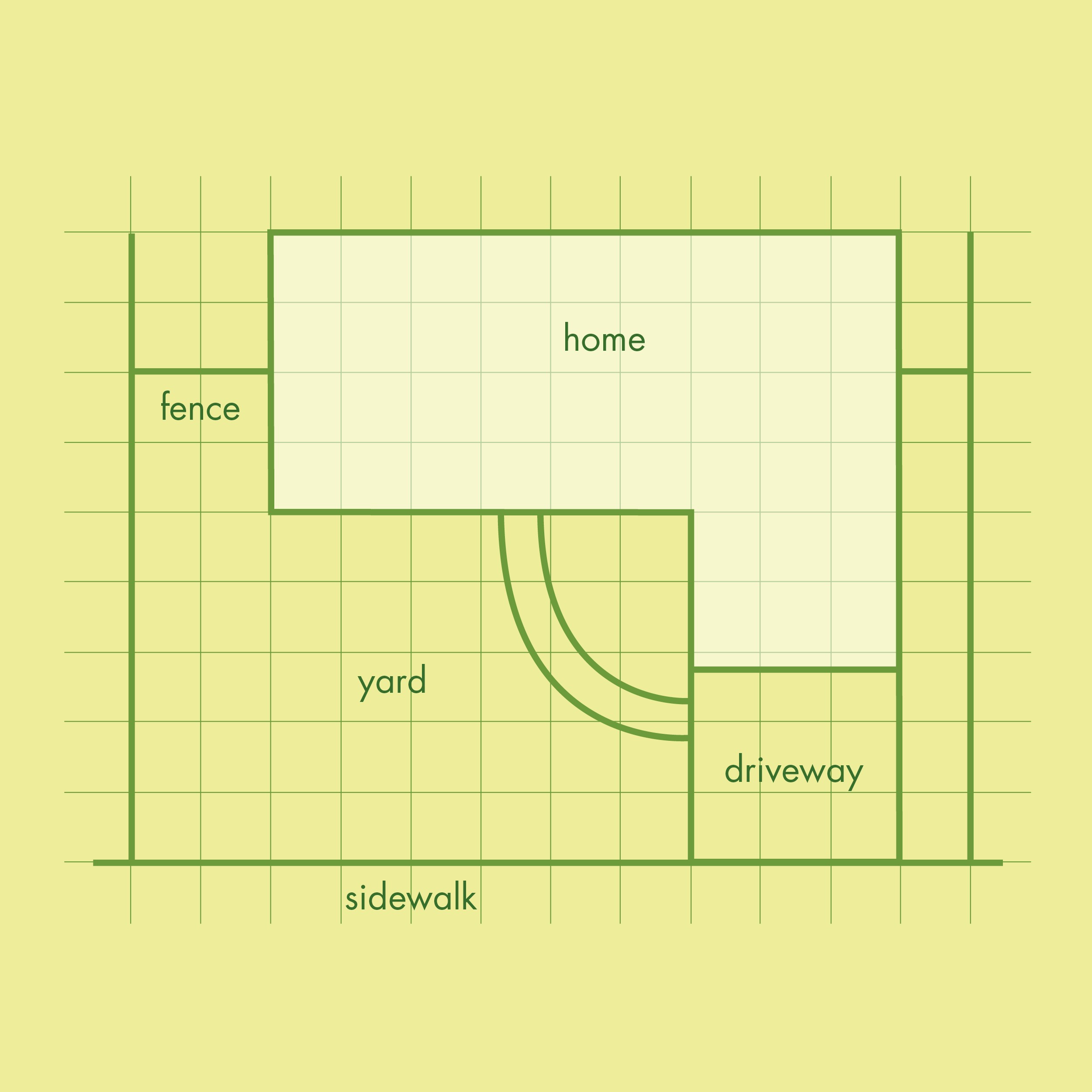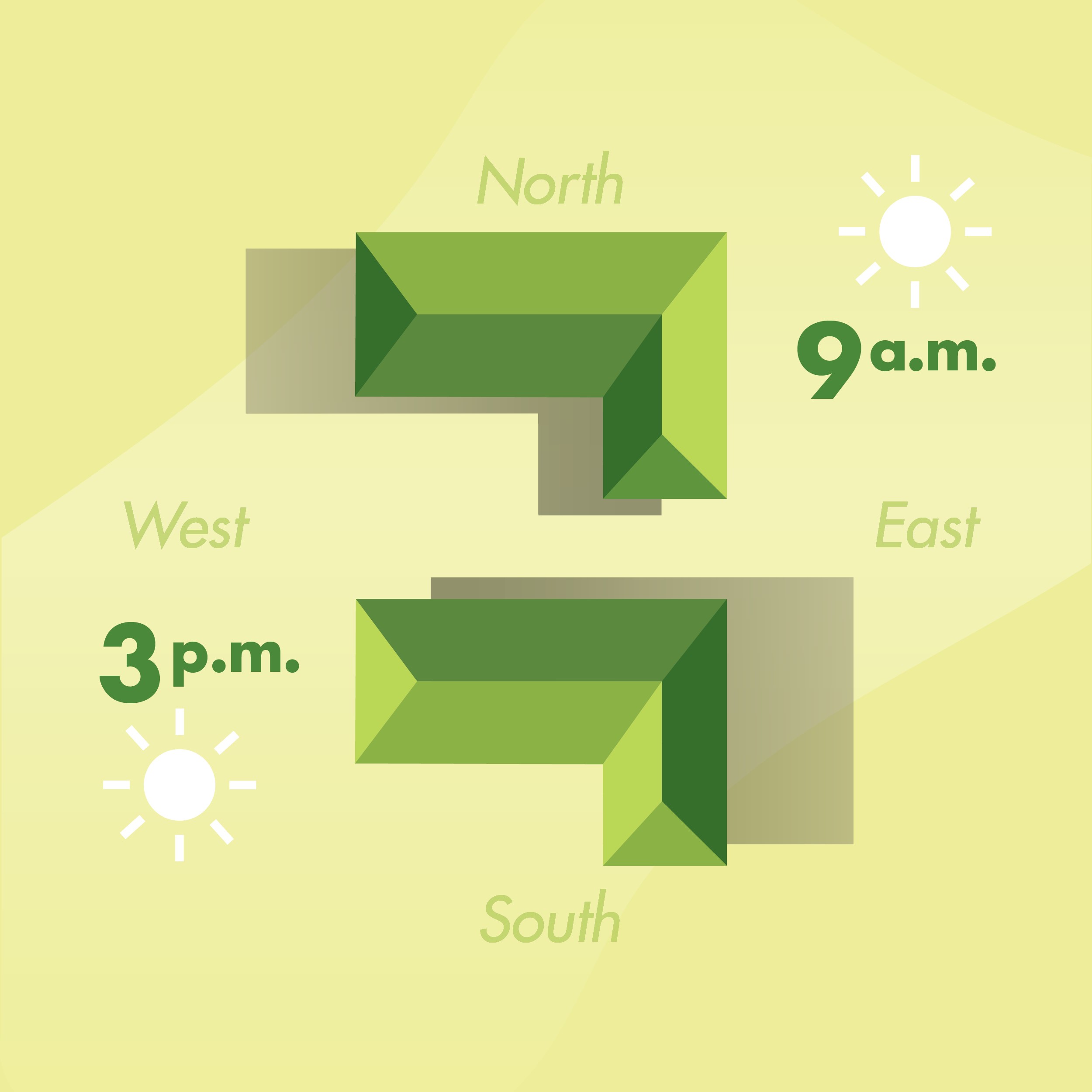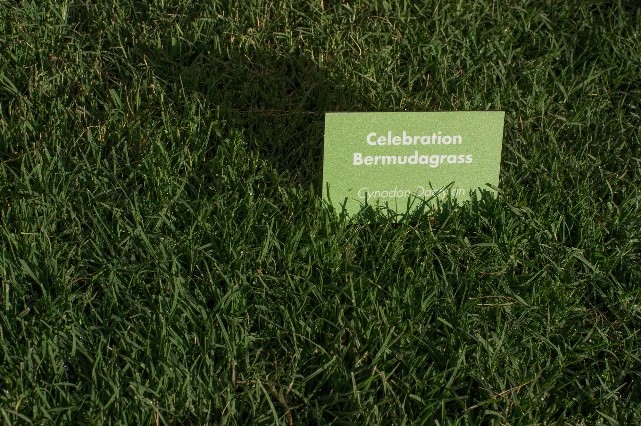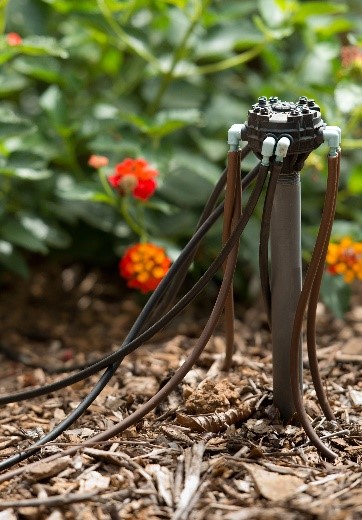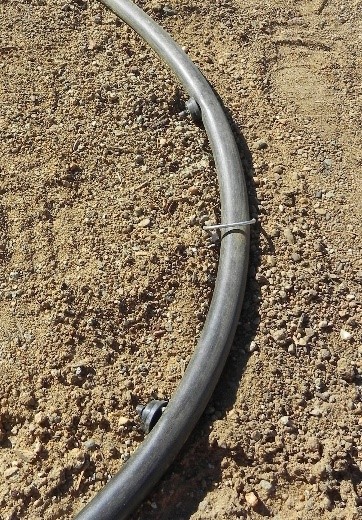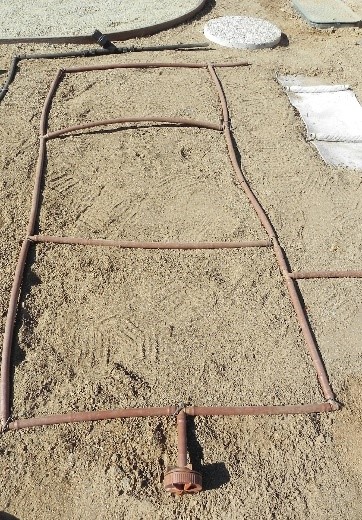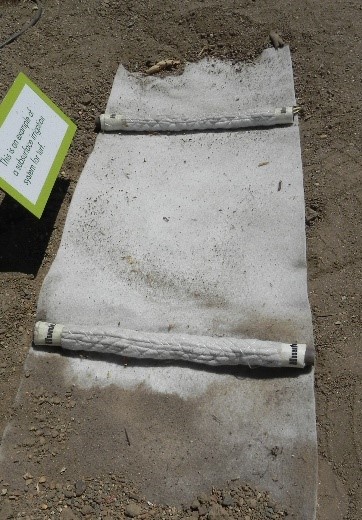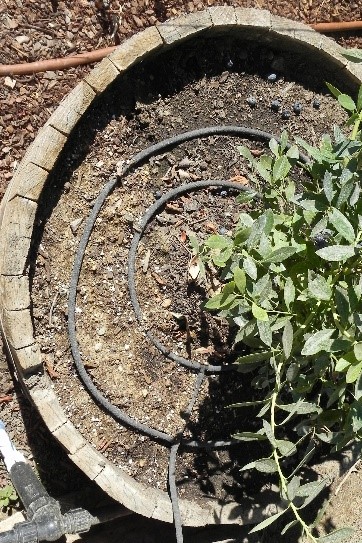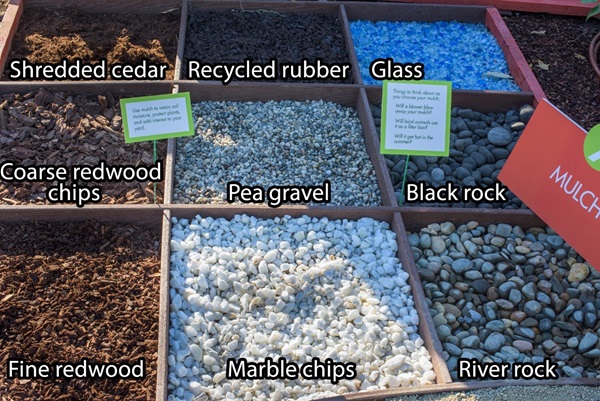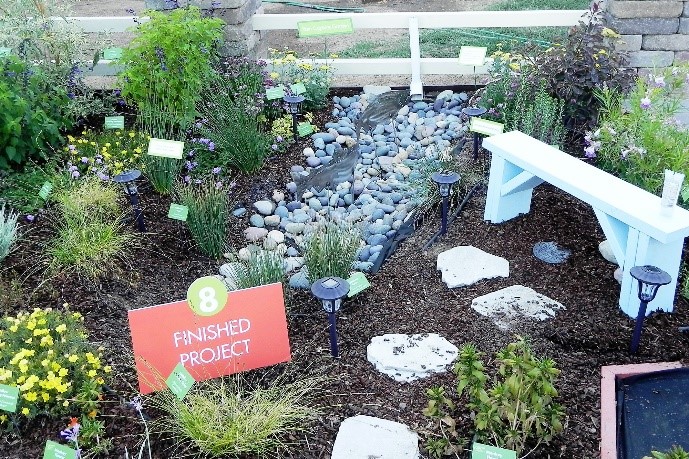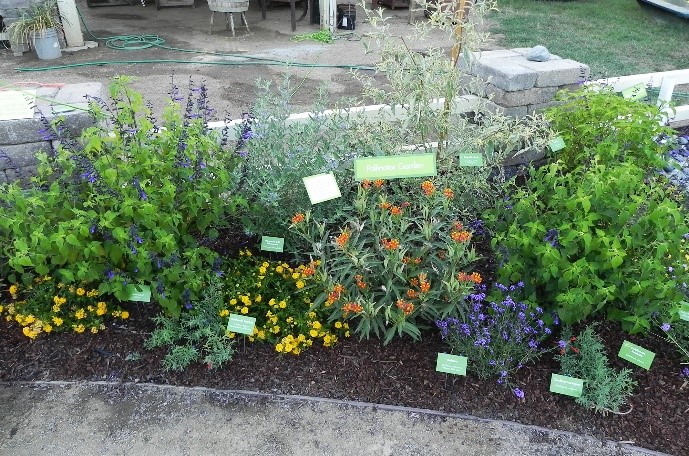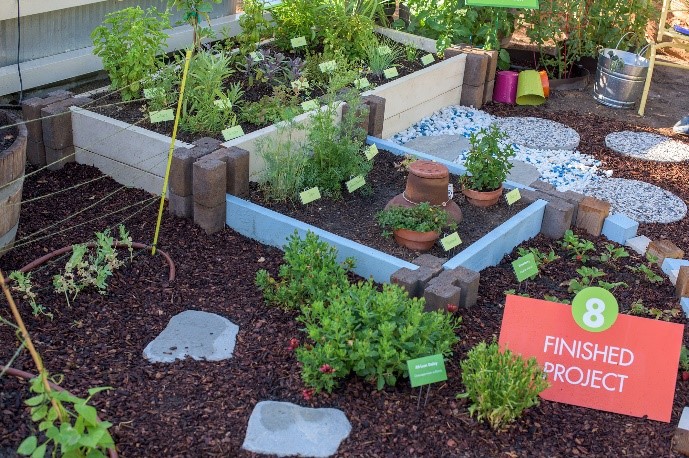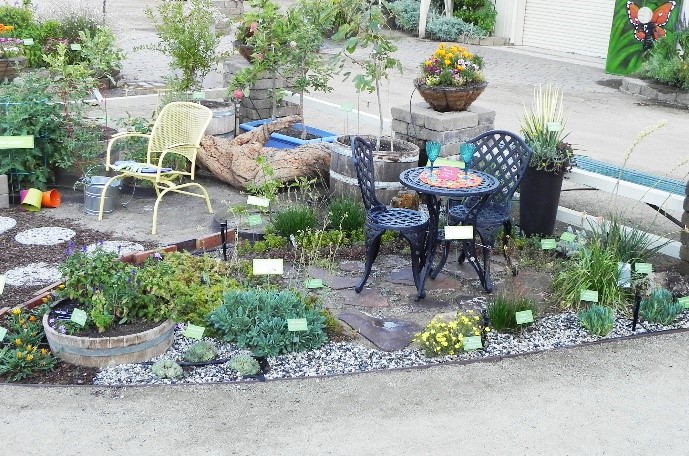Removing Your Lawn
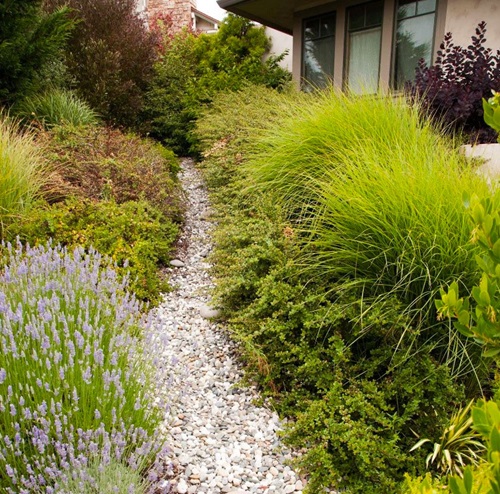
Follow this step-by-step guide to convert your thirsty lawn into 1 of 4 beautiful gardens: rain-wise, pollinator, edible, or succulent.
A Step-By-Step Guide
About half of the water we use at home is spent outdoors on landscaping. Californians have made great strides to improve indoor water efficiency; however, outdoor water efficiency achieves much more water savings. Follow this step-by-step guide to convert your thirsty lawn into 1 of 4 beautiful gardens: rain-wise, pollinator, edible, or succulent.
Planning is the key to creating a beautiful, water-wise landscape. Before you start re-landscaping, take some time to look at your existing yard and think about what you might want to keep or change. Take pictures of your yard from the street and look at your existing plants to assess their health, size, and water use to see if they can be incorporated. We have 4 examples of water-wise gardens – view step 8 for more information.
Measure
Make a diagram of your yard. Measure all the landscape features, including the grass and other planted areas, sidewalks, driveways, doorways, walkways, and outdoor water faucets. Call 811 to locate underground utilities.
Sun & Shade
Note how much sun your yard gets, including the hottest areas and those that get the late afternoon sun. Go outside in the morning and afternoon and note on your map what parts of your yard are shaded at each time of day. Include shade from your home, trees, and any adjacent structures. Plot these sunny and shady areas on your yard diagram. This information will help you with plant selection.
Include all planted areas, sidewalks, driveways, and water faucets when you draft a diagram of your yard.
Map out the sunny and shady areas of your yard on
your diagram in the morning and afternoon.
Soil & Slope
Dig a few test holes (about 2 feet deep) in your soil to see if it is compacted, clay, rocky, or sandy. Identify and include on your yard diagram any areas where you have slops or poor drainage.
Trees
Trees are important, so think about them early in the planning process. Do you have 1 or more trees that will be staying in your yard? Keep in mind the size of the tree at maturity and whether it loses its leaves in winter. If you are planting 1 or more new trees, consider the tree size relative to your lot size and the future impact of its shade on your yard. Don’t forget, fruit trees make good small shade trees. Find an urban forestry group near you:
• California ReLEAF
• Sacramento Tree Foundation
• Tree People
• California Urban Forest Council
Rebates
Check to see if you qualify for rebates to support your lawn conversion project. Rebate programs may be available from your local water supplier. Many programs require you to apply for funding before you start your project.
Look Around
Find inspiration for your project by looking at other homes with water-wise landscaping. What appeals to you? Be sure to consider what plants work well in your climate and your unique landscape. View our conservation photo gallery and other online sources for more ideas:
• Landscape and Plant Guidance – links to plant databases and regional landscaping guidance.
• The Water Use Classification of Landscape Species list – a searchable database to help you select plants, trees, shrubs, and groundcover based on water
use and other criteria.
• California Native Plant Society – find native drought-tolerant plants that work best in your area.
Assess Your Lawn Needs
You may want to keep some lawn if you have pets or kids. Or, you may want to consider reducing your lawn as a first step to saving water and reducing maintenance. If so, consider installing low-water use grasses for your lawn area, such as Celebration Bermudagrass (Cynodon Dactylon), or St. Augustine (Stenotaphrum Secundatum).
Fill in your yard diagram with the areas of planned use, including placement of hardscapes, trees, shrubs, and other plants while being mindful of full height and width in relation to spacing and placement. Consider choosing plants with varying bloom times to encourage color in your yard year-round.
Here are 2 examples of low-water use grasses that are displayed in the exhibit.
Celebration Bermuda grass
(Cynodon Dactylon)
St. Augustine
(Stenotaphrum Secundatum)
Create Your Design
Fill in your yard diagram with the areas of planned use, including placement of hardscapes, trees, shrubs, and other plants while being mindful of full height and width in relation to spacing and placement. Consider choosing plants with varying bloom times to encourage color in your yard year-round.
There are various ways to remove your lawn. Some examples include:
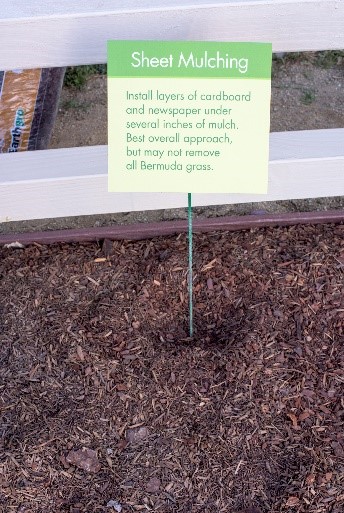
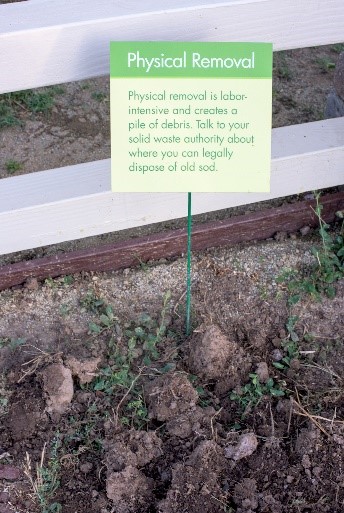
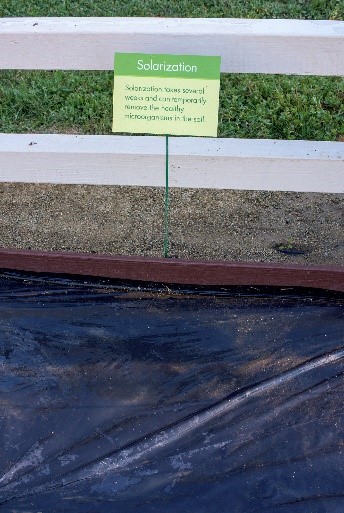

- Sheet Mulching: Install layers of cardboard and newspaper under several inches of mulch. Best overall approach, but may not remove all Bermuda grass.
- Physical removal: Labor-intensive and creates a pile of debris. Talk to your solid waste authority about where you can legally dispose old sod.
- Solarization: Solarization takes several weeks and can temporarily remove the healthy microorganisms in the soil.
- Chemical removal: Chemicals can kill grass, but there are more environmentally friendly approaches to use. If you choose weed killers, carefully follow the directions on the package.
DWR encourages homeowners to consider a lawn removal strategy that reduces waste generation and chemical use. View the below links for more information on turf removal:
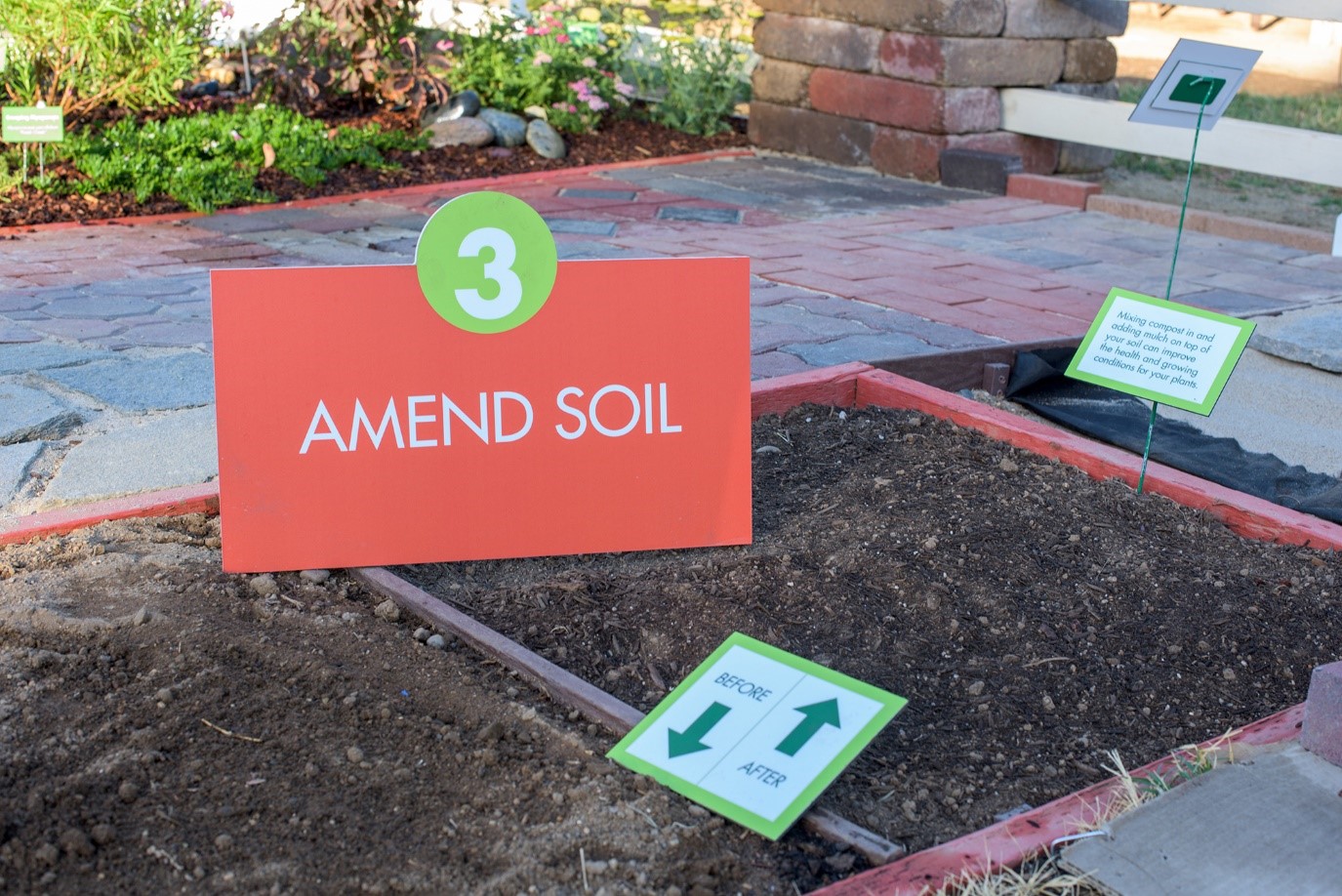
Compost adds nutrients to your soil and helps your plants stay healthy.
Mixing compost in your soil and adding mulch on top can improve the health and growing conditions for your plants. For more information on composting, view:
- US Composting Council: Compost and its benefits
- University of California: Soil and fertilizer in the garden
Deciding on an irrigation system is important when reconfiguring your yard. Keep in mind that plants have different water requirements – by grouping plants in hydrozones (areas of similar water needs), it is easier to match the irrigation system to the plants. Evaluate your existing irrigation system and decide if it can be retrofitted or if a new system is needed.
Examples of irrigation systems for retrofitting or new installations include:
- Drip tubes
- Drip tubing
- Drip lines
- Subsurface
Tree irrigation for new, potted, or drought-sensitive trees can be created with a series of concentric rings of irrigation tubing or lines.
Resources in irrigation planning:
- University of California provides resources on irrigation based on your climate and plant needs
If you are uncertain, you may want to hire a professional to install your irrigation system.
(Photo 1: Drip tubes), (Photo 2: Drip tubing), (Photo 3: Drip lines)
(Photo 1: Subsurface), (Photo 2: A half-inch drip line encircles a new tree), (Photo 3: A quarter inch soaker tubing encircles a potted bush.)
Both tree rings were made using one barbed cross and one T-fitting.
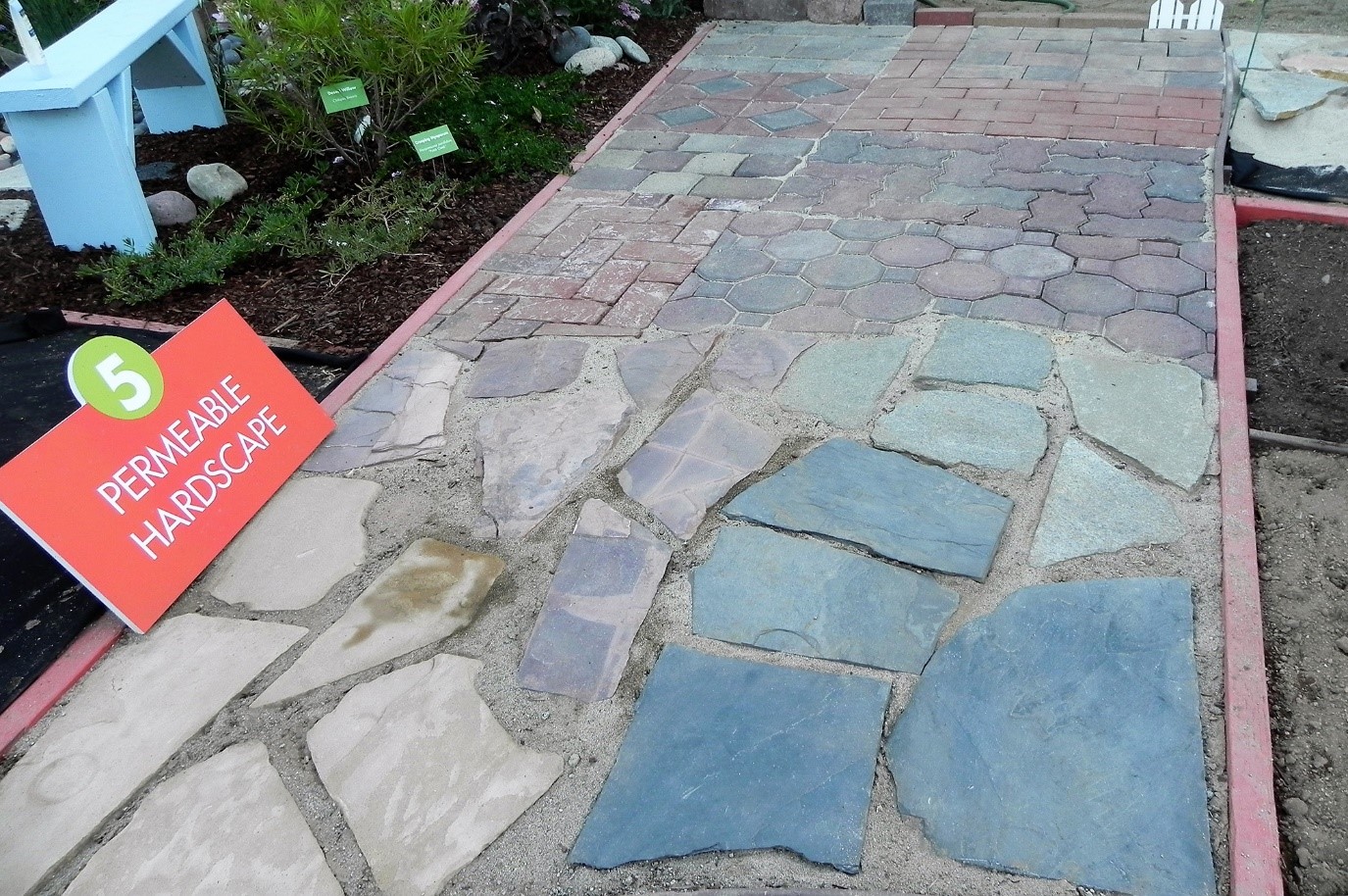
Incorporating walkways, patios, and edging into your landscaping adds versatility. Choose permeable hardscape that allows water to seep through it, which reduces runoff in your yard and helps maintain healthy soils. Use materials like sand, small gravel, or decomposed granite between pavers or flagstone. Have fun with what you choose – there are many different options!
It is easy to install permeable hardscape – dig down a few inches (depth will depend on the thickness of your hardscape), install a weed barrier, then sand or gravel, and finally set your pavers or flagstone.
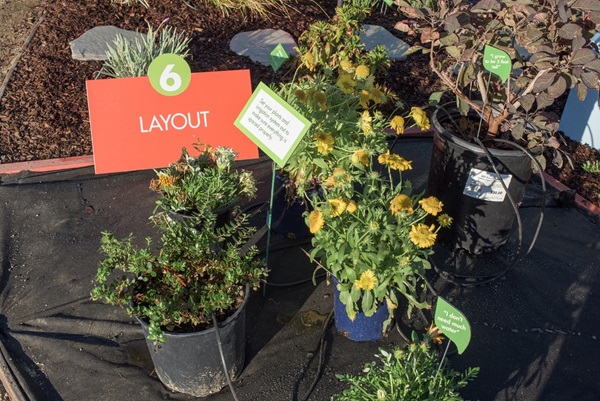
Once you have purchased your plants, set them out where you plan to put them. Make sure they're in the right area for watering, growth, and sun exposure. Double-check that the irrigation system is set and operational. Now it's time to plant!
Mulch serves many purposes – it keeps the soil cooler, protects root systems, and deters weeds. Varying mulch types can also add visual interest to your yard. When evaluating mulch options, consider:
- Do you use a leaf blower? If your mulch is light, it might be blown away.
- Will local animals use it as a litter box?
- Will the mulch get hot in direct sunlight and actually make your soil warmer?
We have 4 examples of finished gardens. You may want to consider incorporating aspects of each garden area into your finished project:
Rain-wise Garden
Divert all or some water from your roof into a dry river bed to reduce urban runoff and keep rainwater in your yard to enhance soil moisture. Rain-wise gardens also create an interesting dimension to your yard – you can put in bridges, pots, or artwork. You can include plants that like wetter soil in the swales (low parts of your river).
Pollinator Garden
Add plants to your garden that attract hummingbirds, butterflies, and bees – it’s good for the environment and local farms. Our garden has several examples of drought-tolerant plants that attract pollinators.
Edible Garden
Edible gardens can be planted in raised beds with your favorite vegetables and herbs: tomatoes, peas, beans, peppers, and lettuces. You can also plant a variety of fruit trees or bushes – fig, pomegranate, lemon, apple, and blueberry. Make use of an olla, an unglazed pottery urn filled with water that then seeps through the pot’s walls and irrigates the adjacent soil. Because there is little evaporation, this is a very efficient irrigation method. Also, plant flowers to attract pollinators to your edible garden.
Succulent Garden
Most succulents stay green and can be very beautiful. Consider using rock and stone as accents. When selecting succulents, choose carefully as many can be frost-and-heat-sensitive. Also, make sure your irrigation is compatible and that the soil is well-drained. Many succulents do not like overhead spray.
References
- Irrigation Controllers
- Saving Trees
- Water-Efficient Landscapes
- Water-Wise Gardens and Landscapes
- Building the California Friendly Landscape (English)
- Building the California Friendly Landscape (Spanish)

